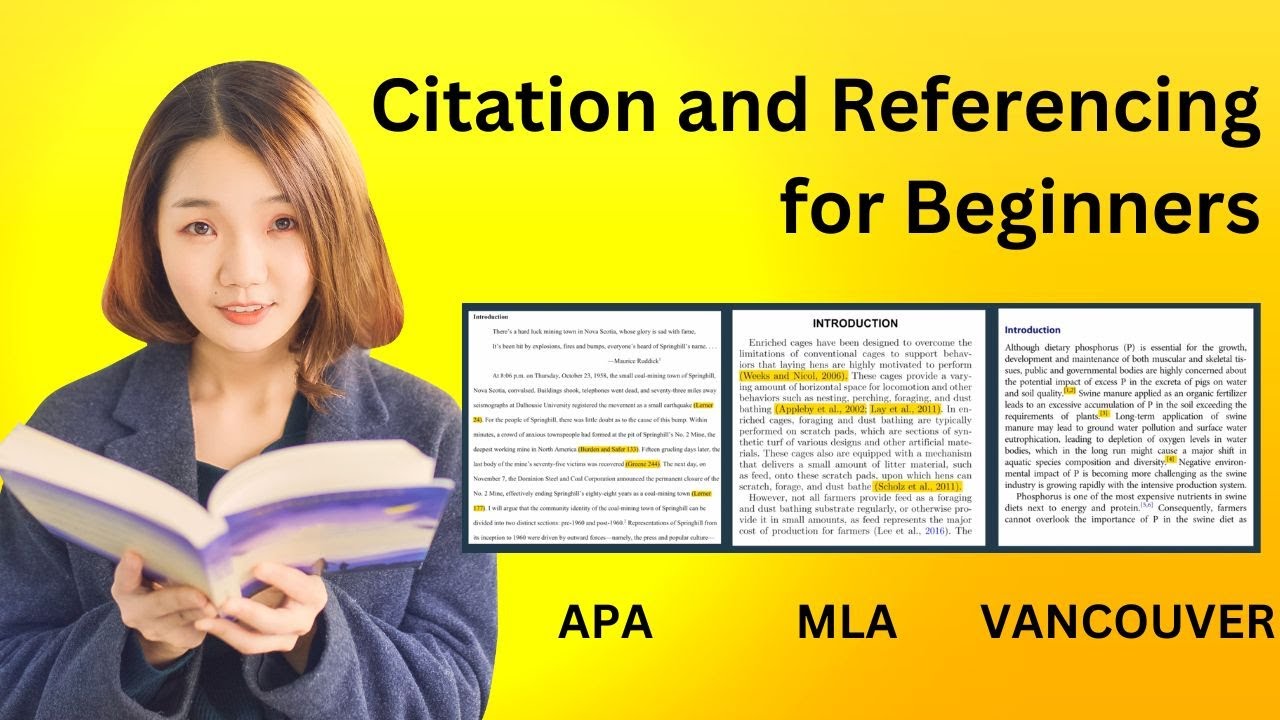Delivering a bad presentation - spot the mistakes
Summary
TLDRThis educational video script focuses on the importance of paraphrasing and proper referencing in academic writing. It explains the three main reasons for using references: validation of viewpoints, avoidance of plagiarism, and facilitating future research. The script contrasts direct quotations with paraphrasing, emphasizing the need to use the latter to demonstrate understanding and minimize direct quotes. It also provides examples of how to paraphrase effectively and the necessary components to include when paraphrasing, such as the author's name and publication year. The conclusion highlights the strength that correct referencing adds to assignments and the importance of giving credit to original ideas.
Takeaways
- 📚 Paraphrasing is essential in academic writing to demonstrate understanding and avoid plagiarism.
- 🔍 There are three main reasons to use references: validation of viewpoints, avoidance of plagiarism, and as a source for future investigation.
- 📝 Two primary methods of referencing in text are through direct quotations and paraphrasing.
- 📖 Quotations should be used selectively and kept to a minimum, as they involve using another author's statement without change.
- 🖋 Paraphrasing involves writing about the source in your own words, which shows your understanding to the reader.
- 🤔 Paraphrasing is more than just changing a few words; it requires a complete rephrasing while maintaining the original meaning.
- 📘 An example of a quote in academic writing emphasizes the importance of stating the sources of ideas and information.
- 📑 A poor paraphrase only changes a few words and does not sufficiently represent the original text in the writer's own voice.
- 📝 A good paraphrase, as demonstrated, puts the ideas in the writer's own words while still referencing the original source.
- ✍️ When paraphrasing, it's crucial to include the author's name or organization and the year of publication.
- 🔑 Correct referencing strengthens assignments and provides credibility by acknowledging the source of ideas.
Q & A
What is the main purpose of using references in academic writing?
-The main purpose of using references is to validate your point of view, avoid plagiarism, and serve as a source of future investigation.
What are the two main ways to reference in text?
-The two main ways to reference in text are through quoting and paraphrasing.
Why should quotations be used selectively and kept to a minimum?
-Quotations should be used selectively and kept to a minimum because they are another author's statement without change, and overuse can detract from the originality of your work.
What is the difference between quoting and paraphrasing?
-Quoting involves using another author's statement verbatim, while paraphrasing involves writing about the source using your own words.
Why is it important to show understanding through paraphrasing?
-Paraphrasing is important to show understanding because it demonstrates that you have grasped the original source's ideas and can express them in your own words.
What is an example of a quote in academic writing as mentioned in the script?
-An example of a quote in academic writing is 'It's essential to state the sources of ideas and information, such references allow readers to refer back to the sources themselves.'
What was the issue with the first attempt at paraphrasing in the script?
-The issue with the first attempt at paraphrasing was that only one or two words were changed, which is not enough to constitute effective paraphrasing.
How did the script improve the paraphrasing in the second attempt?
-The second attempt improved by putting the ideas in the author's own words and not just changing a few words, making it a better paraphrase.
What information is necessary to include when paraphrasing text?
-When paraphrasing, it is necessary to include the author's name or the name of the organization and the year of publication.
Can you provide an example of how to cite an author's work in a sentence as per the script?
-An example of citing in a sentence is: 'Start of a sentence stated that plagiarism is a confusing and difficult concept to fully understand, and at the end of the sentence: plagiarism is confusing and difficult, a difficult concept to fully understand, with the author's surname and date included.'
What is the conclusion of the script regarding referencing and paraphrasing?
-The conclusion is that referencing correctly can strengthen your assignments, and when paraphrasing, you should write in your own words while still giving credit to the original idea's author through proper referencing.
Outlines

Cette section est réservée aux utilisateurs payants. Améliorez votre compte pour accéder à cette section.
Améliorer maintenantMindmap

Cette section est réservée aux utilisateurs payants. Améliorez votre compte pour accéder à cette section.
Améliorer maintenantKeywords

Cette section est réservée aux utilisateurs payants. Améliorez votre compte pour accéder à cette section.
Améliorer maintenantHighlights

Cette section est réservée aux utilisateurs payants. Améliorez votre compte pour accéder à cette section.
Améliorer maintenantTranscripts

Cette section est réservée aux utilisateurs payants. Améliorez votre compte pour accéder à cette section.
Améliorer maintenant5.0 / 5 (0 votes)






